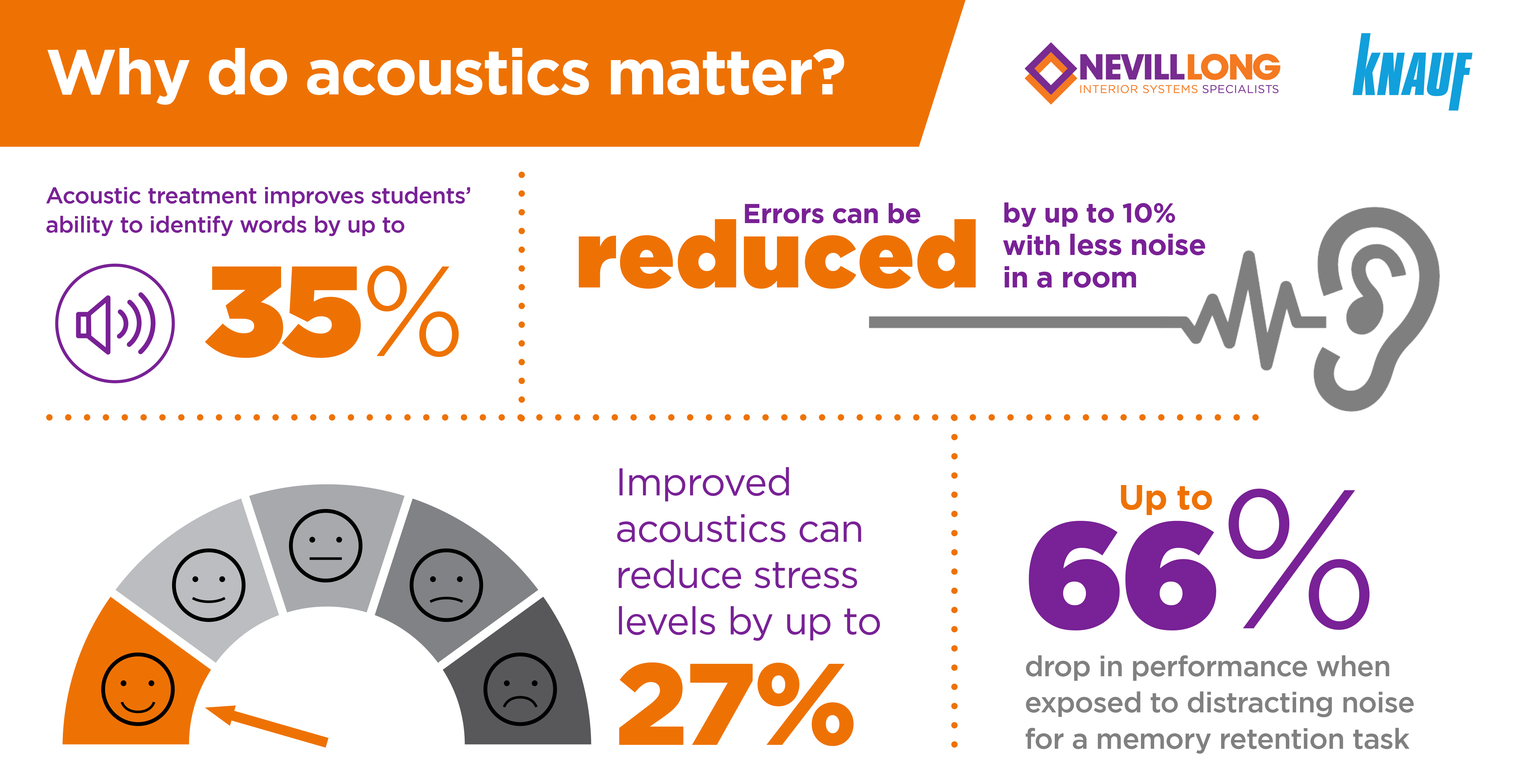
Sound is caused when something vibrates and sends waves of energy into our ears. The vibrations travel through the air (or other medium) to the ear. The sequence of the vibrations is referred to as sound waves. Our ears then convert the sound waves into nerve impulses, which are carried to the brain and interpreted as sound.
Sound is regular, with a pattern, but noise is irregular and is considered as unwanted sound. A room with good acoustics controls the movement of sound to achieve the desired effect, minimising unwanted noise.
Sounds interacts with different surfaces in different ways. The sound waves reflected from hard surfaces are absorbed by soft or fabric surfaces and diffused by irregular surfaces.
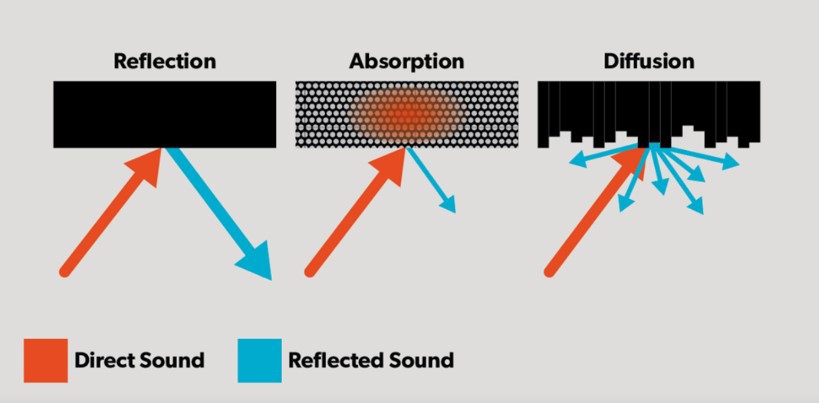
Studies have shown that a hospital with a warm and welcoming physical environment, created using gypsum acoustic ceilings and walls, can improve patient outcomes and recovery times, as well as having a beneficial effect on the wellbeing of hospital staff themselves1.
Knauf’s acoustic gypsum ceiling and wall solutions absorb up to 90% of the sound that hits their surface. They adhere to national acoustic requirements for specific reverberation times and can be tailored to fit the precise needs of different rooms, helping to create quieter and calmer atmospheres, essential in healthcare environments.
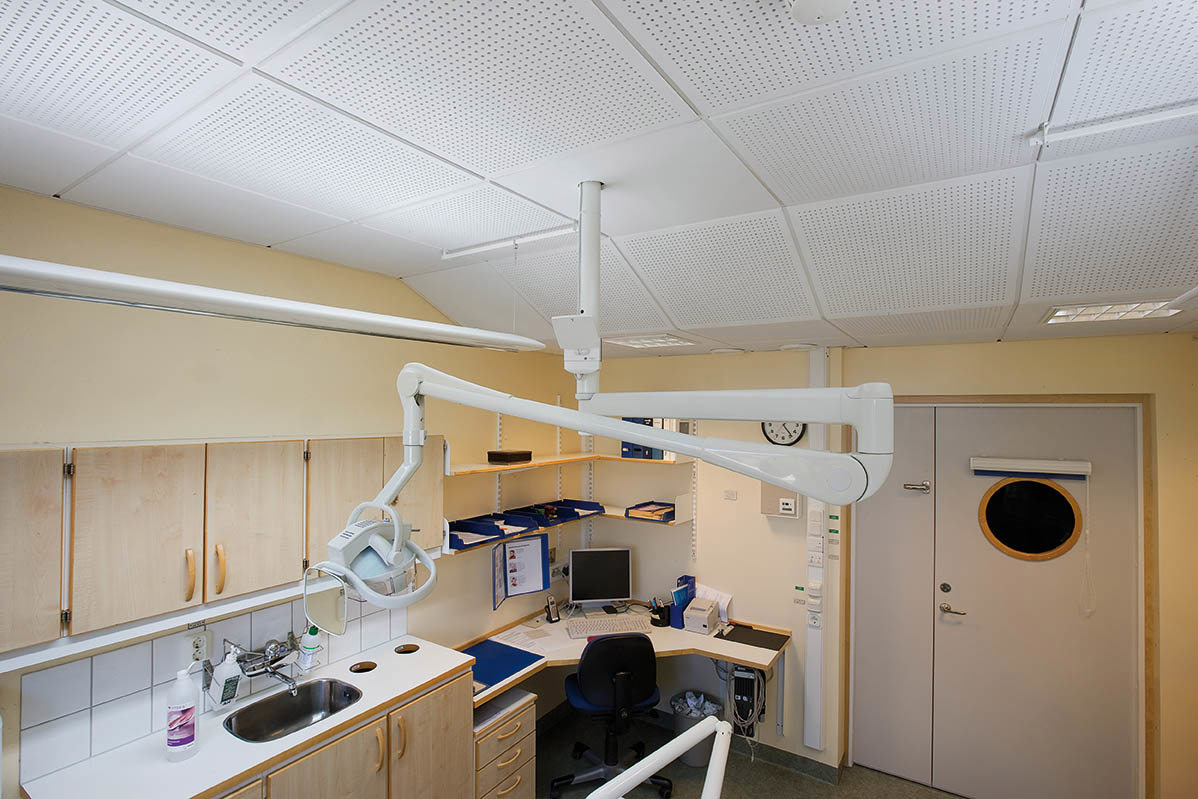
Alan Jones, RIBA President stated, “Well-designed schools have the power to shape society – improving the attainment, behaviour, health and wellbeing of every child.”
As well as the obvious problems with disruptive levels of noise, poor acoustics are also an issue. When sound becomes muffled or distorted it can mean that students in one part of a classroom will struggle to hear what the teacher is saying. Children, especially those younger than 13 years of age, are more disturbed by background noise than adults due to their still-developing sense of hearing2.
Acoustic ceilings can improve students’ ability to identify words correctly by up to 35%3. This makes a significant difference for all children particularly those with learning difficulties or where English is their second language.
Noise, poor acoustics and lack of fresh air in a room are linked with a number of health risks, such as headaches, increased blood pressure, and stress. All these factors affect the work performance in an office. Improved acoustics can reduce stress by 27% and errors by 10% in the workplace4, improving the well-being of the staff.
Even within the home environment, as we move towards more open plan living spaces, something as simple as adding an acoustic wall panel such as Knauf Adit will improve the acoustics by reducing noise levels. The easy to install kit means acoustics can be added to any existing space without major renovation.
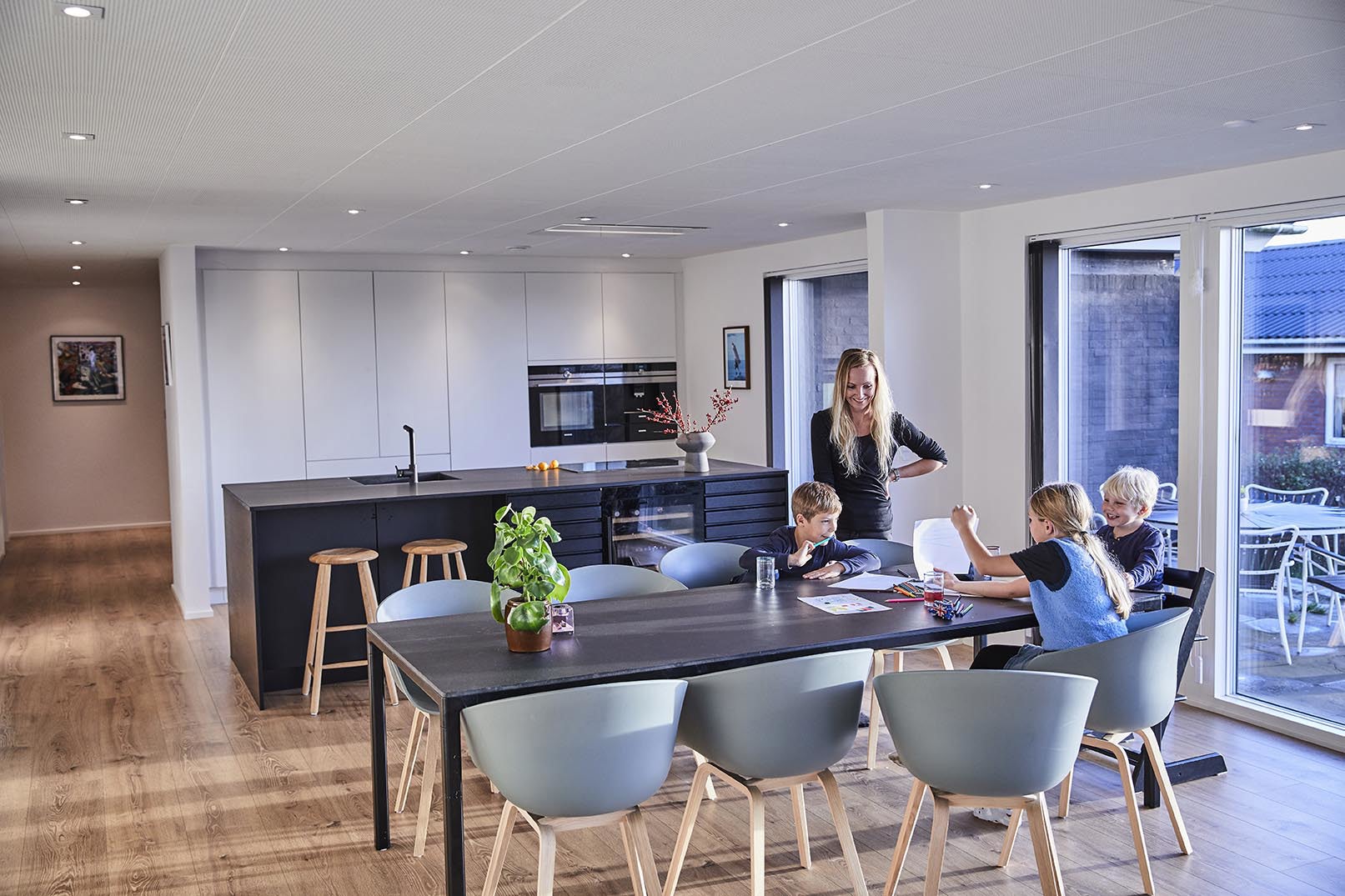
Creating acoustic comfort is about removing unwanted noise, and ensuring that the important sound is spread out into the entire room in a natural, effortless way. Knauf’s perforated gypsum boards and tiles treat sound by absorbing and diffusing it. Various shapes, sizes and patterns of perforations varies the amount of absorption and diffusion to meet requirements. Perforations also enhance aesthetic appeal.
System type is important too. Knauf have two ceiling types which are demountable and non-demountable. A demountable system, a grid and tile system, allows access to services above the ceiling when needed. A non-demountable system is ideal where minimal access is needed and achieves more visual impact.
Knauf’s Corridor 400 system is a demountable solution for corridors with fewer components needed for the system, speeding up installation time and allowing a project milestone to be achieved quickly.
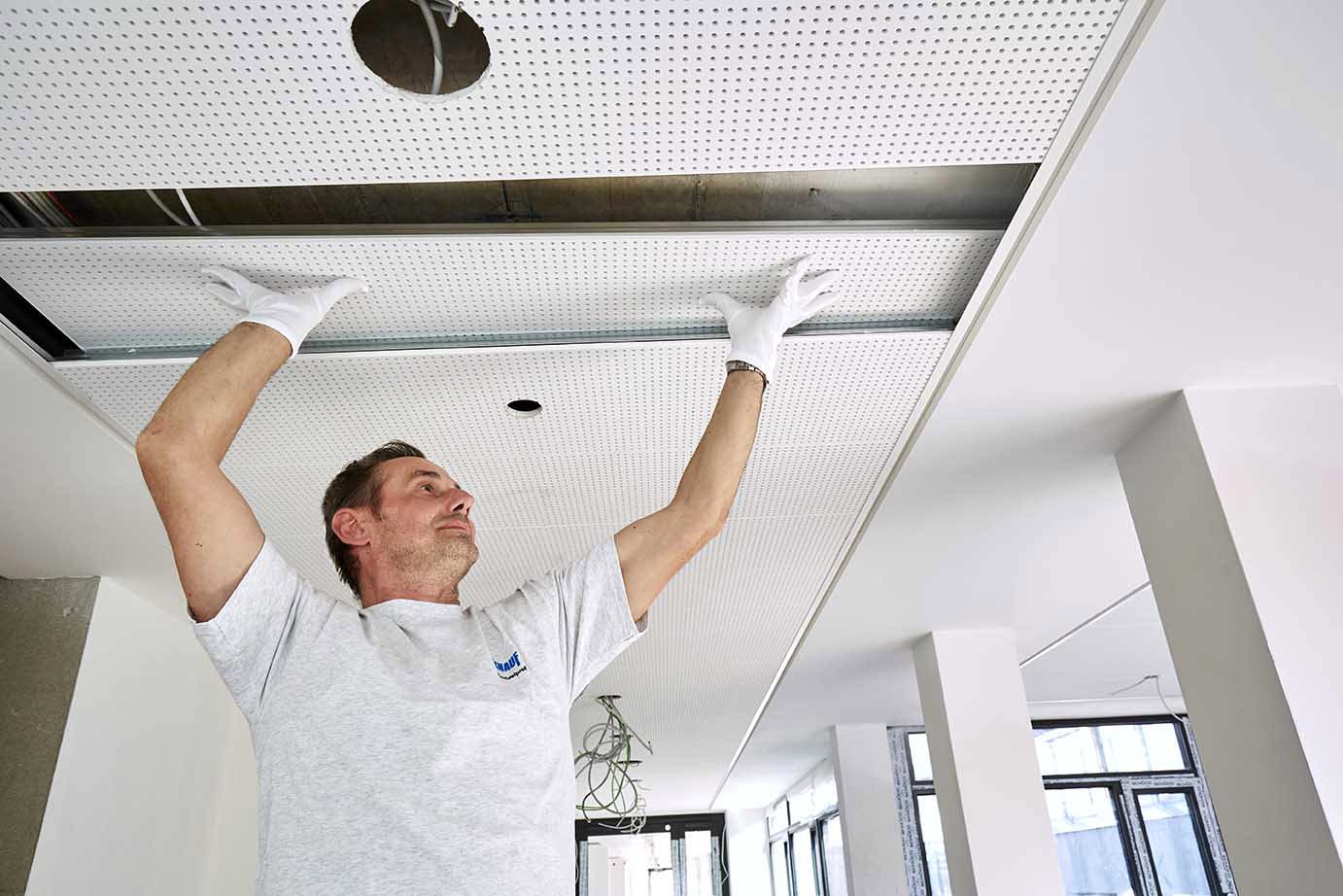
Considering cost of application versus cost of maintenance is an important factor when selecting materials.
Knauf’s acoustic gypsum ceilings and wall products are hardwearing, durable, paintable and are recyclable. The cost may be more expensive initially, but they can be in place for 50 years, giving the end user more value than a product that will need replacing every five years.
Gypsum is a natural, 100% recyclable material. Many of Knauf’s gypsum-based products contain a high content of recycled gypsum, and at the end of its lifetime the product is then recyclable again.
Recyclable gypsum products can be converted back into powder to create new gypsum at the end of its life. The cardboard backing can be recycled too, depending on local recycling restrictions.
Knauf’s wall and ceiling acoustic range is available through Encon & Nevill Long national branch network, offering interiors contractors and subcontractors a wide range of solutions for acoustic requirements. Contact your local branch here or email your enquiry to info@encon.co.uk.
References:
1 Ampt A, Harris P, Maxwell M. 2008 The Health Impacts of the Design of Hospital Facilities on Patient Recovery and Wellbeing, and Staff Wellbeing: A Review of the Literature. Centre for Primary Health Care and Equity, University of New South Wales: Sydney.
2.Nelson, “Sound in the classroom: Why children need quiet”, ASHRAE Journal, 2003.
3 How indoor climate affects productivity in offices, schools, and similar; Pawel Wargocki, DTU
4 Sykes 2004.